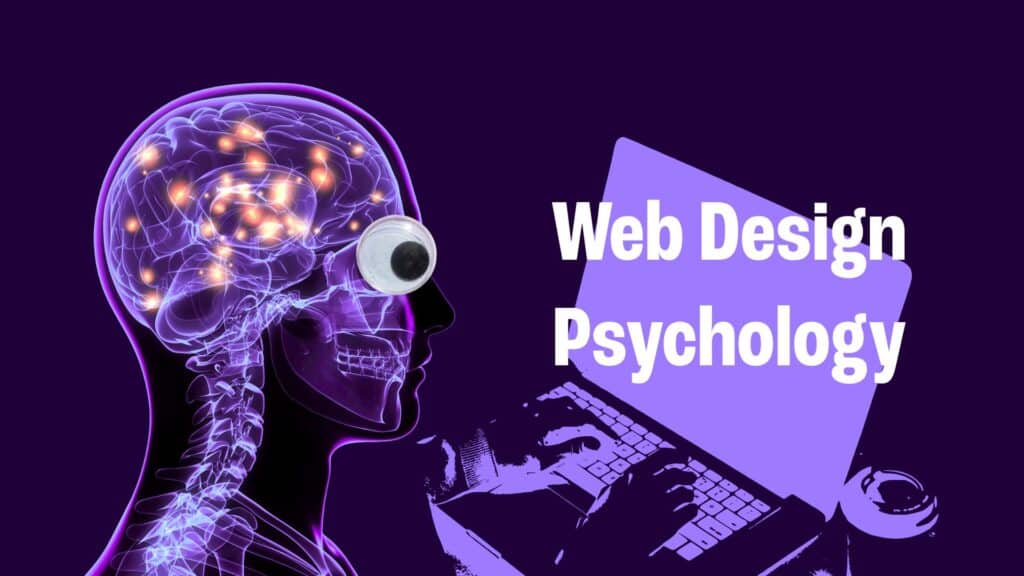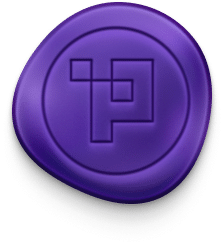Web Design Psychology

How to Tap Into the Human Brain for Better Conversions
Ever wondered why some websites make you want to click “buy now” faster than you can say “impulse purchase,” while others have you backing away like you’ve stumbled into a digital haunted house? Welcome to the fascinating world of web design psychology, where understanding how the human brain works can be the difference between a thriving online business and one that’s collecting digital dust.
Here’s a sobering reality check: 96% of website visits end with no consumer purchase. That’s not a typo. Nearly every single person who lands on your website leaves empty-handed. But before you start questioning your life choices, let’s explore how smart web design psychology can flip those odds in your favour.
TL;DR: The Psychology Cheat Sheet
The Quick Wins:
- Limit choices (Hick’s Law) – Too many options freeze decision-making
- Make buttons big and close (Fitts’s Law) – Easier targets = more clicks
- Use contrasting colours (Von Restorff Effect) – Stand out to get noticed
- Include smiling faces – Human images can boost conversions by 102.5%
- Build trust signals – Security badges and testimonials are conversion gold
- Embrace white space – Breathing room reduces cognitive overload
- Optimise for mobile – Different context needs different design approach
Bottom Line: Your brain processes visuals 60,000x faster than text. Every design choice either builds trust and guides action, or creates confusion and kills conversions. Design with psychology, not just aesthetics.
The Science Behind the Click
Your brain processes visual information 60,000 times faster than text. That means within milliseconds of landing on your website, visitors have already formed an opinion about your business, your credibility, and whether they want to stick around for the show. No pressure, right?
The secret weapon successful websites use isn’t magic, it’s psychology. By understanding how humans naturally behave online, we can design experiences that feel intuitive, trustworthy, and downright irresistible. Think of it as having a conversation with your visitor’s subconscious mind.
Choice Paralysis: When Too Much is Too Much
Remember standing in the cereal aisle for 20 minutes trying to choose between 47 different breakfast options? That’s Hick’s Law in action, and it’s destroying your conversion rates. Named after British psychologist William Edmund Hick, this principle states that the more choices you present, the longer it takes people to make a decision, and the more likely they are to make no decision at all.
Netflix understood this perfectly when they introduced their “Top 10 in your country” section. Instead of overwhelming users with thousands of options, they guide viewers towards popular content, making the decision process smoother and more satisfying.
For your website, this means streamlining your navigation, limiting product options per page, and making your call-to-action buttons impossible to miss. Remember, a confused mind always says no.
The Power of Strategic Placement
Fitts’s Law might sound like something you’d learn in physics class, but it’s actually your secret weapon for better conversions. This principle, developed by psychologist Paul Fitts in 1954, shows that the time required to reach a target depends on its size and distance from the starting point.
In practical terms? Make your important buttons big, bold, and easy to reach. On mobile devices, this is especially crucial position your main call-to-action buttons where thumbs naturally rest, and make them large enough that even the most caffeine-jittery fingers can hit them accurately.
The Von Restorff Effect: Standing Out in a Digital Crowd
Also known as the isolation effect, this psychological principle explains why that bright red “Buy Now” button outperforms its subtle, colour-coordinated cousins. Items that are visually distinctive are more likely to be remembered and acted upon, which is why successful e-commerce sites often use contrasting colours for their primary actions.
But here’s where it gets interesting—it’s not just about colour. Size, shape, whitespace, and even animation can make elements stand out. The key is strategic isolation: make your most important elements distinctive, but don’t turn your website into a disco ball of competing highlights.
Trust: The Ultimate Conversion Currency
In our age of digital scepticism, trust isn’t just nice to have, it’s absolutely essential. Research shows that trustmarks are the number one factor helping people decide whether to trust a website. That’s why smart businesses display security badges, customer testimonials, and professional certifications prominently.
But trust goes deeper than badges. Clean, professional design suggests competence. Fast loading times show you respect visitors’ time. Clear contact information demonstrates transparency. Every design choice either builds or erodes trust—there’s no neutral ground.
The Face Effect: Why Humans Love Humans
Here’s a conversion hack that sounds almost too simple to work: include pictures of smiling people on your website. In one famous study, adding a picture of a person smiling increased conversions by 102.5%. Why? Because humans are hardwired to respond to faces and read emotions from facial expressions.
This doesn’t mean plastering stock photos of unnaturally cheerful people everywhere. Authentic images of your team, genuine customer photos, or even illustrated characters with clear facial expressions can create that crucial human connection that transforms browsers into buyers.
Colour Psychology: More Than Pretty Palettes
Colour isn’t just decoration – it’s communication. Red creates urgency and excitement, blue builds trust and professionalism, green suggests growth and money. According to Adobe research, colour plays an essential role in web development as it influences users’ emotions, perceptions, and actions on an unconscious level.
But here’s the catch: cultural context matters enormously. What feels trustworthy in Australia might feel cold in other markets. The key is understanding your audience and testing different approaches to see what resonates with your specific customers.
The Mobile Reality Check
With current conversion rates averaging 1.81% across all e-commerce businesses, every improvement matters. But here’s something that might surprise you: mobile users behave differently than desktop users, and your design needs to account for these differences.
Mobile users are often in different contexts, standing in queues, commuting, or multitasking. They have less patience for complex navigation and smaller targets to hit. This means mobile-optimised design isn’t just about making things smaller; it’s about completely rethinking the user journey for thumb-friendly interaction.
White Space: The Unsung Hero
Sometimes what you don’t include is just as important as what you do. White space (or negative space) isn’t wasted space – it’s strategic breathing room that guides attention and reduces cognitive load. Clean, uncluttered designs help users focus on what’s important rather than feeling overwhelmed by visual noise.
Think of white space as the pause between musical notes that makes the melody beautiful. Without it, even the most gorgeous design elements become a cacophonous mess.
The Psychology of Persuasion
Successful web design psychology isn’t about manipulation, it’s about understanding natural human behaviour and designing experiences that feel intuitive and satisfying. When you align your design with how people naturally think and behave, everyone wins: visitors get what they need faster, and businesses see better results.
At Pixite, we’ve seen firsthand how applying these psychological principles transforms struggling websites into conversion powerhouses. It’s not about tricks or gimmicks, it’s about creating digital experiences that truly understand and serve your customers.
Ready to Leverage Your Way to Better Conversions?
Understanding web design psychology is like having a secret decoder ring for human behaviour. When you know why people click, scroll, and convert, you can design experiences that feel natural, trustworthy, and compelling.
Remember, every design choice is a psychological choice. The colours you pick, the placement of your buttons, the amount of white space you include, all of these decisions influence how visitors feel and behave on your website. The question isn’t whether psychology affects your conversions; it’s whether you’re using it intentionally or leaving it to chance.
Your website isn’t just a digital brochure, it’s a conversation with every visitor’s subconscious mind. Make sure you’re saying the right things.
Info
Posted: July 15, 2025
Reading Time:6 minutes
Author
Table Of Contents

